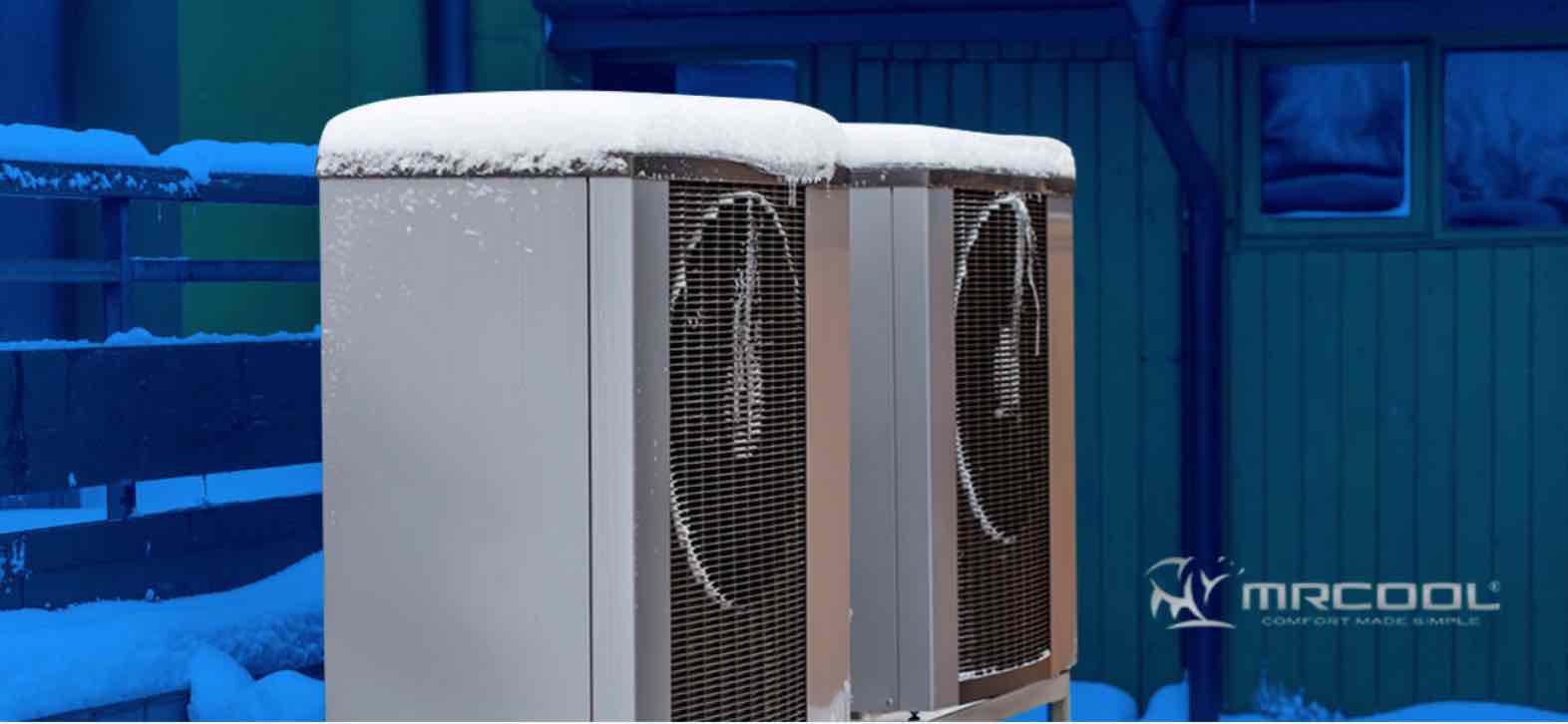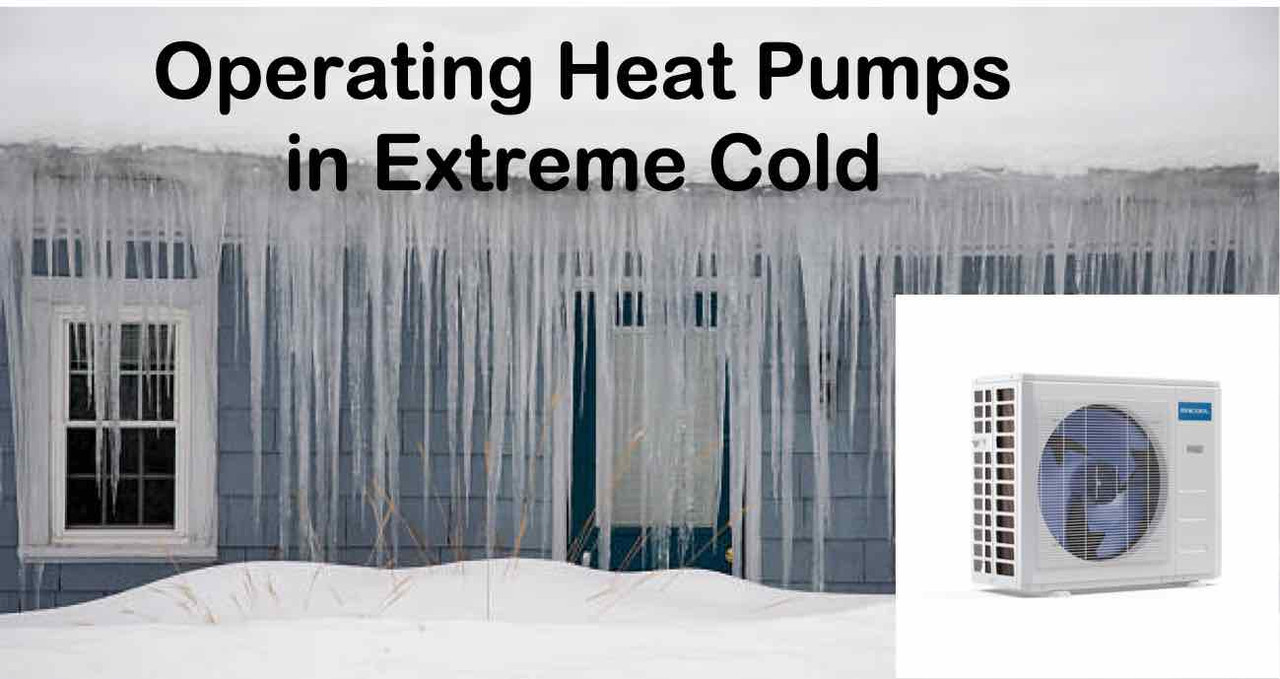Operating Heat Pumps in Extreme Cold: Understanding How Heat Pumps Work in Freezing Temperatures
Operating Heat Pumps in Extreme Cold: Understanding How Heat Pumps Work in Freezing Temperatures
It's a cold winter day, and you have just returned home from work. You turn up the thermostat, expecting to feel the warmth of your heat pump within a few minutes. However, to your surprise, the temperature in your home remains the same, and you begin to feel chilly. You check your heat pump and realize it struggles to keep up with the extreme cold outside. What to do? You need to understand the mechanics of heat pumps and how they work in extreme temperatures.
The story scenario highlights the challenges of operating heat pumps in freezing temperatures. However, some strategies can be employed to optimize heat pump performance and ensure efficient operation even in freezing temperatures. In the following sections, we will explore how heat pumps work, the impact of freezing temperatures on their process, and strategies for optimizing their performance in cold weather regions. This is an example to understand the effect of freezing temperatures on heat pump performance. This article explores operating Heat Pumps in Extreme colds, thereby understanding How Heat Pumps Work in Freezing temperatures.
Heat pumps are an excellent heating and cooling solution for homes and buildings in moderate climates. They are energy-efficient, cost-effective, and environmentally friendly, making them an attractive option for homeowners and businesses. However, when temperatures drop below freezing, the efficiency of heat pumps can be significantly affected, posing challenges for their operation. To understand how heat pumps work in freezing temperatures, let's first look at how they operate in moderate climates. Simply put, a heat pump transfers heat from one place to another. It uses a refrigerant to absorb heat from the air or ground outside and moves it into your home or building to warm it up. During the summer, the heat pump works in reverse, transferring heat from inside your home to the outside to cool it down.
While heat pumps are highly efficient in moderate temperatures, they can struggle in icy weather conditions. This is because there is less heat available in the air to be absorbed by the refrigerant. As a result, the heat pump may struggle to produce enough heat to keep your home or building warm.
How a heat pump works
Heat pumps transfer heat from one location to another, using a refrigerant to absorb and release heat. The process is based on the principles of thermodynamics and is highly energy-efficient, making it an attractive option for heating and cooling homes and buildings. In this article, readers must understand how a heat pump works.
The basic functioning of a heat pump involves a cycle of four main processes: compression, condensation, expansion, and evaporation. The refrigerant, typically a fluid with a low boiling point, is compressed by the compressor to increase its temperature and pressure. The hot refrigerant then passes through a condenser, releasing heat to the surrounding air or water. As it cools, the refrigerant condenses into a liquid and passes through an expansion valve, which reduces its pressure and temperature. The cool refrigerant then evaporates in an evaporator coil, absorbing heat from the surrounding air or water and returning to its gaseous state.
The role of the refrigerant in heat pumps is critical. It is the medium through which heat is transferred between the indoor and outdoor units of the heat pump. The refrigerant flows continuously between the two units, absorbing heat in one location and releasing it in another. The refrigerant is carefully selected based on its thermodynamic properties and the temperature range at which the heat pump is intended to operate.
The heat pump can still extract heat from the outside air, even in freezing temperatures. While the air's heat decreases as the temperature drops, there is still enough thermal energy for the heat pump to operate. When the outside air temperature drops below a certain threshold, a defrost cycle is activated, which melts any accumulated ice on the outdoor unit and allows the heat pump to operate efficiently again.
Heat pumps transfer heat from one location to another using a refrigerant to absorb and release heat. The refrigerant is carefully selected based on its thermodynamic properties, and the heat pump can extract heat from the outside air even in freezing temperatures. In the next section, we will discuss the impact of freezing temperatures on heat pump operation.

Impact of Freezing Temperatures on heat pumps
When temperatures drop below freezing, the efficiency of heat pumps can be significantly affected, posing challenges for their operation. This can result in increased energy consumption and reduced heating capacity, leading to discomfort and higher utility bills. Let's look at the impact of freezing temperatures on heat pump operation. The effects of extreme cold on heat pump performance are significant. As the temperature drops, the heat available in the outside air decreases. This means that the heat pump has to work harder to extract the same amount of heat, leading to reduced efficiency and increased energy consumption. In addition, the heat pump compressor may struggle to maintain the required pressure, leading to reduced heating capacity, to counteract these effects, heat pumps are equipped with a defrost cycle. This cycle is activated when ice accumulates on the heat pump's outdoor unit. During the defrost cycle, the heat pump switches into cooling mode, and the outdoor unit is heated to melt any accumulated ice. This ensures that the heat pump can operate efficiently even in freezing temperatures.
Improper installation and maintenance of heat pumps in cold weather regions can also lead to potential issues. For example, if the heat pump needs to be adequately sized for the home or building, it may need help to keep up with heating demand in freezing temperatures. In addition, if the heat pump is not installed correctly, it may be exposed to the elements, leading to freezing and reduced efficiency. Regular maintenance is also essential for optimal heat pump operation in freezing temperatures. This includes checking and replacing air filters, cleaning the outdoor unit, and inspecting the refrigerant lines for leaks. Professional servicing is recommended at least once a year to ensure the heat pump functions correctly and efficiently.
Freezing temperatures can significantly impact heat pump operation, decreasing efficiency and increasing energy consumption. However, the defrost cycle and proper installation and maintenance can help ensure optimal heat pump performance in cold weather regions.
Compare heat pumps and Boilers/Furnaces.
Heat pumps are becoming increasingly popular for homeowners living in cold regions, thanks to advanced technology that has created heat pumps capable of operating in freezing temperatures. But how do heat pumps work in these extreme weather conditions? In this article, we will explore the mechanics of heat pumps and explain how they work in freezing temperatures.
Heat pumps can work efficiently in below-freezing temperatures. This has been proven in countries like Norway, Sweden, and Finland, where homeowners rapidly choose heat pumps as their heating and cooling systems. In the United States, states like Maine, New York, Massachusetts, and California also promote the switch to heat pumps.
Heat pumps consist of two copper or aluminum coils, one inside and one outside, aluminum fins, and a compressor. The system also contains refrigerant, which plays a critical role in the heat transfer process. Warm air naturally moves to colder air, and heat pumps take advantage of this by extracting warm air from the outside with the help of the refrigerant. The refrigerant becomes a gas that carries the heat to the indoor coil, condensing it into a liquid, releasing heat that ultimately warms up your home.
Heat pumps are much more efficient than traditional heating methods like boilers and furnaces. They can produce three times more heat energy than they use in electricity to run. This efficiency also makes heat pumps cost-effective, saving some homeowners $900 annually. Furthermore, since heat pumps transfer heat instead of generating it, they are a much more environmentally friendly heating and cooling option.
Heat pumps can work efficiently in freezing temperatures, making them a practical option for homeowners in cold regions. The mechanics of heat pumps and their use of refrigerant play a crucial role in heat transfer, ultimately warming up your home.
Conclusion on the importance of heat pumps
In conclusion, understanding how heat pumps operate in freezing temperatures is essential for homeowners in cold regions. While heat pumps are highly efficient in moderate temperatures, they can struggle in icy weather conditions, leading to reduced efficiency and increased energy consumption. However, some strategies can be employed to optimize heat pump performance in freezing temperatures.
Choosing a suitable heat pump for cold weather regions is critical, and homeowners should ensure that it is appropriately sized for their home and has a high heating capacity and coefficient of performance. Improving heat pump efficiency and performance in freezing temperatures can be achieved through insulation, thermostat use, regular maintenance, and professional servicing.
Compared to traditional heating methods like boilers and furnaces, heat pumps are a more efficient and environmentally friendly option for homeowners in cold weather regions. They can produce three times more heat energy than they use in electricity to run and are cost-effective, saving homeowners upwards of $900 annually. Optimizing heat pump performance in freezing temperatures is achievable by selecting a suitable heat pump, improving efficiency and performance, and regular maintenance and professional servicing. With their many benefits, heat pumps are an attractive option for homeowners in cold weather regions looking for an efficient and environmentally friendly heating and cooling solution.
Buy Heat pumps from Tend Industrial Supplies click here









